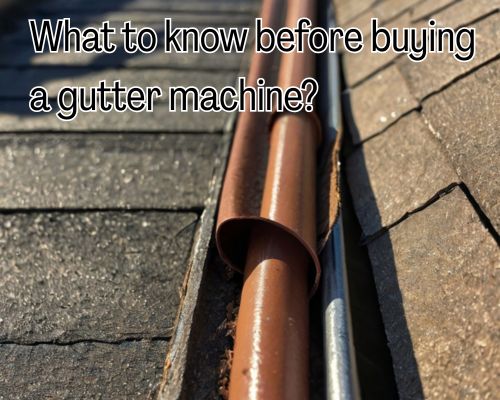If you’re asking, “What is the gross profit margin for a roofing company?”, especially in a competitive market like New Jersey, you’re already thinking like a successful entrepreneur. Gross profit margin is one of the most critical financial metrics in the roofing business—it reveals the efficiency of your operations and the viability of your pricing strategy. But what exactly does it mean for your roofing business in NJ, and how do top contractors maintain healthy margins?

This comprehensive guide explores the average gross profit margin for roofing companies, the factors that influence it, how it compares across the U.S., and how New Jersey-based roofing businesses can optimize for stronger financial performance.
What is Gross Profit Margin in Roofing?
Gross profit margin is the percentage of revenue that remains after deducting the cost of goods sold (COGS)—materials and direct labor—from total sales. It does not include operating expenses like office rent, marketing, or administrative salaries.
📊 Formula:
Gross Profit Margin (%) = (Revenue – COGS) / Revenue × 100
Typical Gross Profit Margins for Roofing Companies
Across the U.S., the average gross profit margin for roofing contractors typically ranges from 30% to 40%. However, high-performing roofing companies often aim for 45% to 50%, especially those offering premium roofing solutions or operating in high-demand areas like Northern and Central New Jersey.
📍 New Jersey Roofing Profit Benchmarks:
- Low-end margins (entry-level companies): 25%–30%
- Average for small to mid-sized firms: 35%–40%
- High-performing or niche roofing companies: 45%–55%
Why does New Jersey offer a chance for higher margins? Demand for roof replacements and repairs remains strong due to variable weather patterns, seasonal storms, and the dense housing stock in places like Newark, Jersey City, Edison, and Toms River.
Key Factors Affecting Roofing Profit Margins in New Jersey
1. Material Costs
Shingle prices, underlayment, flashing, and insulation vary based on market volatility. NJ roofing companies must build supplier relationships to secure bulk pricing and avoid profit erosion.
- Asphalt shingles: Most commonly used, moderate cost
- Metal roofing: Higher material cost but better longevity and margins
- Slate or tile: High-end, allows for premium pricing strategies
2. Labor Costs
New Jersey’s labor rates are higher than the national average due to cost of living. Average roofing labor in NJ can range from $25 to $45 per hour, depending on experience and certification.
🔎 Tip: Streamlining crew efficiency and investing in training can reduce job time and increase gross profit.
3. Job Complexity
Steep slopes, multi-story homes, and complex architecture require more time, equipment, and safety measures—raising COGS. However, you can charge higher premiums for such jobs, preserving margins.
4. Service Type
- Residential re-roofing often yields higher gross margins due to streamlined processes.
- Commercial flat roofing can have tighter margins due to competition and longer job durations.
- Emergency repairs and storm damage restoration allow for higher profit markups, especially when working with insurance claims.
How to Improve Your Roofing Gross Profit Margin in NJ
✅ 1. Refine Your Estimating Process
Accurate estimates are the foundation of profitability. Overestimating COGS can lose you the job, while underestimating eats your margin. Use digital tools like RoofSnap, AccuLynx, or JobNimbus to fine-tune your calculations.
✅ 2. Negotiate Better Supplier Terms
Form long-term relationships with local suppliers in areas like Elizabeth, Paterson, or Atlantic City to access bulk discounts or seasonal deals on materials.
✅ 3. Leverage Local SEO and Lead Generation
More leads = better job selectivity. Target high-income ZIP codes in New Jersey (e.g., 07760 – Rumson, 07078 – Short Hills) with a strong SEO strategy, focusing on keywords like:
- “roof replacement cost NJ”
- “best roofing company in Monmouth County”
- “licensed roofers near Bergen County”
By improving organic visibility, you’ll attract clients willing to pay premium rates—directly boosting your gross profit margin.
✅ 4. Upsell Roofing Accessories
Boost your average ticket price by upselling high-margin add-ons like:
- Gutter guards
- Ridge vents
- Solar-compatible flashing
- Attic ventilation systems
Each of these adds minimal labor but can significantly increase revenue per job.
✅ 5. Optimize Crew Scheduling
Downtime kills margins. Use scheduling software and performance KPIs to measure labor efficiency across sites in Hudson, Middlesex, and Camden counties.
Gross Margin vs. Net Margin: Don’t Get Confused
Gross profit margin only accounts for direct costs. Your net profit margin factors in overhead—truck payments, insurance, marketing, admin salaries, etc.
🧮 A business with 40% gross profit might only see a 10% net profit margin after all expenses. Don’t mistake one for the other when benchmarking your roofing business. See roofing contractors for more.
Roofing Industry Trends in New Jersey: 2025 Outlook
New Jersey roofing companies in 2025 are navigating both rising material prices and increased insurance claim scrutiny. To stay competitive and maintain strong margins, businesses are:
- Shifting toward eco-friendly roofing options like cool roofs and solar shingles
- Offering financing options to close high-value deals
- Investing in CRM and project management software to track profitability in real-time
Emerging suburbs in Ocean County and Hunterdon County are also seeing growth in custom home development—offering higher-margin new installation opportunities.
Conclusion: Think Beyond the Numbers
To answer the focus question directly—“What is the gross profit margin for a roofing company?”—a solid New Jersey roofing business should aim for 35%–50% gross margins, depending on services offered, market segment, and operational efficiency.
But numbers alone don’t scale your business. Strategic thinking, investing in digital infrastructure, refining your estimating system, and understanding the local New Jersey roofing market will separate average companies from truly profitable ones.
Whether you operate out of Trenton, Princeton, or the shoreline towns, the key is aligning pricing, productivity, and promotion to build a roofing brand that isn’t just breaking even—but thriving.







